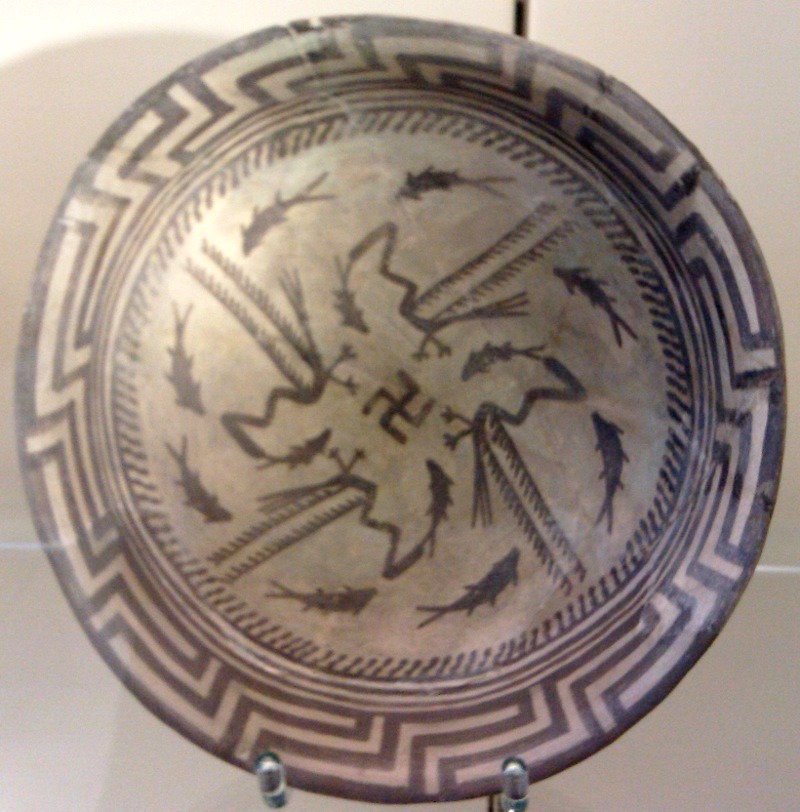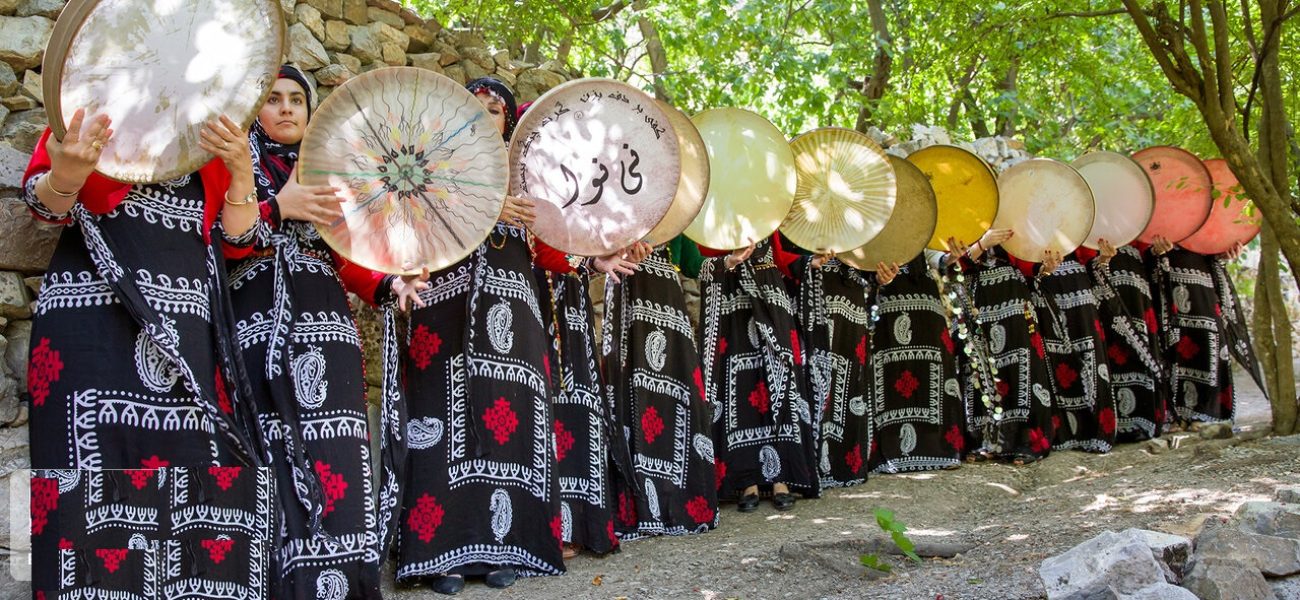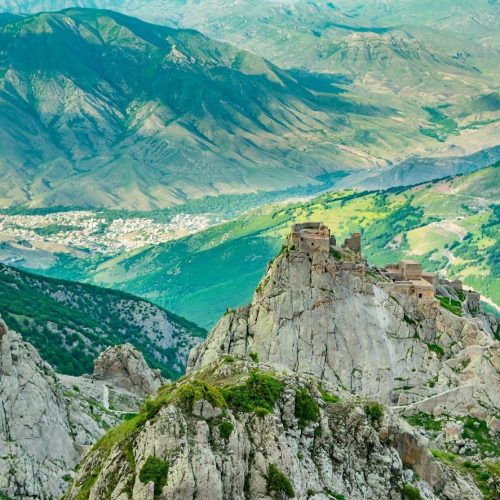In the rich tapestry of Persian culture, the celebration of seasonal festivals holds a significant place, reflecting the intricate relationship between nature, mythology, and human life. Among these, جشن چلهٔ تموز (Jashn-e Chelleh-ye Tamooz), or the festival of the peak of summer, stands out as a vibrant and multifaceted tradition. This article explores the various dimensions of this ancient celebration, delving into its historical roots, regional variations, and its enduring presence in Persian literature and culture.
The Longest Day of the Year and Mount Damavand Day
The summer solstice, which occurs around June 21st, marks the longest day of the year. This astronomical event is when the tilt of Earth’s axis is most inclined towards the sun, resulting in the maximum amount of daylight. For many cultures, including Persian, this day has profound symbolic significance, representing the triumph of light over darkness and the zenith of nature’s vitality.
Cultural Significance of the Summer Solstice
In Persian culture, the summer solstice is not merely a calendar event but a moment of celebration and reverence. It signifies the peak of solar power, a time when the sun, regarded as a source of life and energy, shines its brightest. This period of extended daylight is seen as a time of abundance, growth, and the flourishing of life, both in the natural world and in human activities.
The summer solstice is also a time for community gatherings, where people come together to participate in various traditional activities. These may include singing, dancing, and sharing meals, all aimed at honoring the sun and expressing gratitude for its life-giving warmth. The day is marked by joy and festivity, reflecting the cultural importance of harmony with nature and communal bonds.
Mount Damavand: A Symbol of National Pride

Mount Damavand, the highest peak in Iran, stands as a majestic symbol of Persian culture and identity. Rising to an elevation of 5,609 meters (18,403 feet), this dormant stratovolcano is located in the Alborz mountain range, near the southern coast of the Caspian Sea. Its snow-capped peak is visible from Tehran on clear days, serving as a constant reminder of the country’s natural grandeur and historical legacy.
In Persian mythology and literature, Mount Damavand holds a prominent place. It is often associated with epic tales and heroic figures, such as the legend of Zahhak and the valiant deeds of Kaveh the Blacksmith. According to these ancient stories, Damavand is the site where Kaveh, a symbol of resistance against tyranny, defeated the evil king Zahhak, imprisoning him within the mountain. This mythological connection imbues Damavand with a sense of timelessness and enduring strength.
The Day of Damavand
The Day of Damavand, celebrated on the summer solstice, is a time to honor this iconic mountain and its symbolic significance. This celebration is deeply intertwined with the themes of resilience, freedom, and the eternal struggle between good and evil. Communities living in the shadow of Damavand, as well as those across Iran, observe this day with various rituals and festivities.
On this day, people might undertake pilgrimages to the mountain’s base or even attempt to climb its slopes, paying homage to its storied past. Traditional music and dance performances are common, featuring melodies and rhythms that evoke the spirit of the ancient legends. Storytelling sessions, where elders recount the epic tales associated with Damavand, play a crucial role in keeping the cultural heritage alive for younger generations.
Natural and Mythological Intertwining
The celebration of the summer solstice and the reverence for Mount Damavand are closely linked, reflecting the natural and mythological intertwining in Persian culture. The longest day of the year, with its abundant sunlight, mirrors the towering presence of Damavand, which stands as a testament to nature’s grandeur and the human capacity for resilience.
This period of extended daylight is seen as a powerful reminder of the enduring light of wisdom and virtue, much like Damavand’s enduring presence in the landscape. The connection between the sun’s peak and the mountain’s prominence serves as a metaphor for the highs of human achievement and the strength found in unity and tradition.
Modern Observances and Environmental Awareness
In contemporary times, the Day of Damavand and the summer solstice also carry messages of environmental awareness and conservation. As climate change and environmental degradation pose significant challenges, these celebrations underscore the importance of preserving natural landmarks and promoting sustainable practices.
Educational programs and activities aimed at raising awareness about environmental issues are often integrated into the festivities. These initiatives highlight the need to protect Mount Damavand and other natural treasures for future generations. They emphasize the cultural duty to safeguard the environment, reflecting the deep-seated respect for nature inherent in Persian traditions.
The Longest Day of the Year and Mount Damavand Day encapsulate the rich cultural and natural heritage of Persia. The summer solstice, with its celebration of light and life, and the reverence for Mount Damavand, symbolizing resilience and national pride, are powerful reminders of the enduring connection between humanity and nature. These observances not only honor the past but also inspire contemporary efforts to protect and cherish the natural world, ensuring that the legacy of these traditions continues to shine brightly.
The Meaning and History of Tamooz
The month of Tamooz, a time of intense heat and peak summer conditions, holds profound significance in Persian culture and history. The name “Tamooz” itself carries deep-rooted connections to ancient civilizations, and the customs and traditions associated with this period reveal a complex tapestry of cultural and agricultural practices.
Etymology of ‘Tamooz’
The term “Tamooz” originates from the Akkadian word “Tammuz,” which in turn stems from the Sumerian “Dumuzi.” In ancient Mesopotamian mythology, Dumuzi (or Tammuz) was a god associated with fertility, agriculture, and the cycle of life and death. He was the consort of Inanna (Ishtar), the goddess of love and war. The myth of Tammuz’s death and subsequent descent into the underworld, followed by his resurrection, symbolizes the cyclical nature of seasons and the renewal of life.
As these ancient cultures interacted and influenced each other, the worship of Tammuz spread to neighboring regions, including Persia. The name and the associated rituals were adapted to fit the local cultural context, blending with indigenous beliefs and practices.
Historical Background and Ancient Celebrations
In ancient Persia, the month of Tamooz (corresponding roughly to June-July in the Gregorian calendar) was a period of significant agricultural activity. The intense heat of this month was both a challenge and a blessing, essential for the ripening of certain crops but also demanding careful management of water and resources.
Celebrations during Tamooz were multifaceted, often involving rituals to ensure the fertility of the land and the prosperity of the community. These included offerings and sacrifices to deities associated with the sun and agriculture, communal feasts, and various rites aimed at invoking divine favor for a bountiful harvest.
One of the key aspects of these ancient celebrations was the veneration of water, a precious resource in the arid regions of Persia. Rituals often involved the consecration of wells and springs, the construction of qanats (underground aqueducts), and the invocation of rain through prayers and ceremonies. Water was seen not only as a physical necessity but also as a sacred element, vital for life and growth.
Symbolic Meanings and Seasonal Implications

Tamooz, representing the height of summer, is symbolically rich in Persian culture. It is a time when the forces of nature are at their most potent, with the sun’s energy reaching its zenith. This period is characterized by both abundance and intensity, reflecting the dual nature of summer as a season of plenty and hardship.
The heat of Tamooz is often seen as a metaphor for passion and transformation. In Persian poetry and literature, the scorching summer sun is frequently used to symbolize the burning intensity of love, the fervor of spiritual seeking, and the trials of personal growth. Just as the sun’s relentless heat can transform the landscape, so too can the fiery trials of life forge resilience and strength.
Cultural Integration and Evolution
Over the centuries, the observance of Tamooz has evolved, integrating elements from various cultural and religious traditions. The Zoroastrian influence, with its emphasis on the cosmic struggle between light and darkness, has further enriched the symbolism of Tamooz. In Zoroastrian cosmology, the sun is a symbol of Ahura Mazda’s light, representing truth, order, and life. The height of summer, therefore, is a time to celebrate the triumph of these principles.
The Islamic period brought additional layers of meaning to Tamooz, as the Persian calendar and festivals adapted to the new religious context. While some of the ancient rituals were modified or faded away, the core themes of reverence for nature, communal solidarity, and the cyclical rhythms of life persisted. The month of Tamooz continued to be a time of reflection, celebration, and agricultural activity, blending old traditions with new influences.
Modern Celebrations and Continuity
In contemporary Iran, the legacy of Tamooz is still evident in various cultural practices and regional festivals. While the specific rituals may have changed, the essence of honoring the peak of summer and its significance remains. Modern celebrations often include community gatherings, feasts, and artistic performances that echo the themes of abundance and transformation.
Environmental awareness and sustainability have become important aspects of modern observances, reflecting the enduring connection between Tamooz and the natural world. Educational programs and initiatives aimed at preserving traditional agricultural practices and protecting natural resources are integral to contemporary celebrations, ensuring that the wisdom of the past continues to inform present and future generations.
The meaning and history of Tamooz encapsulate a rich tapestry of cultural, agricultural, and spiritual elements. From its ancient Mesopotamian roots to its evolution in Persian culture, Tamooz represents a time of intensity, transformation, and renewal. The celebrations associated with this month reflect the deep connection between humanity and the natural world, a relationship that continues to inspire and guide Persian cultural practices today. As we explore the layers of meaning and history embedded in Tamooz, we gain a deeper appreciation for the resilience and adaptability of these traditions, and their enduring relevance in the modern world.
Applications of Tamooz
The concept of Tamooz extends beyond its historical and mythological origins, finding diverse applications in Persian culture, literature, and daily life. Its significance permeates various aspects of society, reflecting the multifaceted nature of this pivotal period in the Persian calendar.
Symbolic and Cultural Significance
In Persian culture, Tamooz is imbued with symbolic meanings that are both profound and varied. The intense heat of the month serves as a powerful metaphor for passion, transformation, and resilience. This symbolism finds expression in numerous cultural practices and artistic representations.
Tamooz symbolizes the peak of natural forces, a time when the sun’s power is at its height. This period is often associated with themes of maturity and fulfillment, representing the culmination of growth and the readiness for harvest. It is a time when the fruits of labor become evident, and the efforts of planting and nurturing are rewarded.
Agricultural Practices
Agriculture has always been a cornerstone of Persian life, and the applications of Tamooz in farming practices are particularly significant. The intense heat of Tamooz, while challenging, is essential for the ripening of many crops. Farmers have developed various strategies to cope with the extreme temperatures and ensure the health of their crops during this critical period.
One of the key agricultural practices associated with Tamooz is the meticulous management of water resources. In many parts of Iran, where water is scarce, the ancient system of qanats (underground aqueducts) plays a crucial role in providing a steady supply of water to fields and orchards. The maintenance and celebration of these water systems are integral to the observance of Tamooz, highlighting the vital connection between water and life.
Additionally, farmers perform rituals to protect their crops from the scorching sun and to invoke divine blessings for a bountiful harvest. These rituals often include offerings and prayers to deities associated with agriculture and the sun, reflecting a deep reverence for the natural forces that govern agricultural cycles.
Tamooz in Persian Literature

The literary applications of Tamooz are rich and varied, with the month serving as a powerful symbol in Persian poetry and prose. Classical poets such as Hafez, Rumi, and Ferdowsi have used the imagery of Tamooz to convey themes of love, longing, and spiritual quest.
In poetry, the searing heat of Tamooz is often a metaphor for the intensity of love and the trials of separation. The burning sun becomes a symbol of the lover’s passion and the beloved’s beauty, as well as the challenges that must be overcome in the journey of the heart. This imagery is vividly captured in verses that evoke the stark contrasts of light and shadow, heat and coolness, reflecting the emotional landscape of the human experience.
For instance, in the works of Hafez, the month of Tamooz is often portrayed as a time of fervent longing and deep reflection. The poet uses the heat of Tamooz to symbolize the inner fire of love and the transformative power of longing, creating a rich tapestry of images that resonate with the reader’s own emotional experiences.
Seasonal and Festive Applications
The seasonal implications of Tamooz extend to various festivals and communal activities that celebrate the peak of summer. These festivals are marked by joy and communal solidarity, serving as a means of reinforcing social bonds and cultural identity.
One such festival is Jashn-e Niloufar, the Festival of the Water Lily, which takes place during Tamooz. This festival celebrates the blooming of water lilies, symbolizing purity and renewal. The rituals of Jashn-e Niloufar often include the decoration of homes and public spaces with water lilies, poetry recitations, and communal feasts, reflecting the cultural significance of this beautiful flower and its association with the life-giving properties of water.
In addition to Jashn-e Niloufar, regional variations of Tamooz celebrations are observed across different parts of Iran, each with its own unique customs and traditions. These regional festivals highlight the diversity of Persian culture and the adaptability of its traditions to different environmental and social contexts.
Environmental and Educational Applications
In contemporary times, the applications of Tamooz have expanded to include a focus on environmental awareness and education. As climate change and environmental degradation pose significant challenges, the themes of Tamooz—resilience, adaptation, and the reverence for natural forces—have taken on new relevance.
Educational programs and community initiatives often incorporate the symbolism of Tamooz to raise awareness about sustainable practices and the importance of preserving natural resources. These efforts aim to inspire a sense of responsibility and stewardship, encouraging individuals and communities to protect their environment and ensure the well-being of future generations.
Tamooz in Daily Life
Beyond its cultural and literary applications, Tamooz influences various aspects of daily life in Iran. The practical implications of coping with the summer heat, such as adjusting daily routines and activities to avoid the peak temperatures, reflect the lived experience of Tamooz.
Traditional cooling methods, such as the use of badgirs (wind towers) and shaded courtyards, are essential during this period. These architectural features, designed to harness natural ventilation and provide relief from the heat, exemplify the ingenuity and adaptability of Persian culture in responding to environmental challenges.
Moreover, the dietary practices during Tamooz also reflect the need to balance the body’s heat and maintain health. Foods and drinks that are believed to have cooling properties, such as yogurt, cucumber, and mint, are commonly consumed to counteract the effects of the summer heat, demonstrating the holistic approach to well-being that is characteristic of Persian culture.
The applications of Tamooz in Persian culture are diverse and multifaceted, encompassing agricultural practices, literary symbolism, seasonal festivals, and daily life. The month of Tamooz, with its intense heat and transformative energy, serves as a powerful reminder of the deep connections between humanity and the natural world. Through the lens of Tamooz, we gain insight into the resilience, creativity, and adaptability of Persian culture, as well as the enduring relevance of its traditions in both historical and contemporary contexts.
Jashn-e Niloufar (Festival of the Water Lily)

Among the many vibrant celebrations that mark the Persian calendar, Jashn-e Niloufar, or the Festival of the Water Lily, stands out as a particularly enchanting event. Celebrated during the peak of summer, this festival is a tribute to the delicate yet resilient water lily, a flower that holds deep symbolic significance in Persian culture.
Description of the Festival and Its Rituals
Jashn-e Niloufar is a celebration that occurs during Tamooz, when water lilies are in full bloom. The festival is marked by various rituals and activities that honor the beauty and significance of this aquatic flower.
One of the central rituals involves the decoration of homes, public spaces, and waterways with water lilies. People gather at lakes, ponds, and rivers where the lilies grow, adorning these areas with the vibrant blooms. This practice not only enhances the aesthetic beauty of the surroundings but also serves as a reminder of the harmonious relationship between humans and nature.
In addition to floral decorations, the festival includes a range of communal activities. Poetry recitations are a key feature, with participants sharing verses that celebrate the water lily’s beauty and the life-giving properties of water. These poems often draw on classical Persian literature, where the water lily is a recurring symbol of purity, renewal, and the delicate balance of life.
Feasting is another integral part of Jashn-e Niloufar. Families and communities come together to share meals, with dishes that highlight seasonal produce and local culinary traditions. The communal feasts foster a sense of unity and togetherness, reinforcing social bonds and cultural identity.
Cultural and Symbolic Significance of the Water Lily
The water lily, known as “Niloufar” in Persian, is a flower rich in symbolism. It is often associated with purity and beauty, arising pristine from the muddy waters in which it grows. This imagery resonates deeply in Persian culture, reflecting the themes of transformation and renewal that are central to many aspects of life and spirituality.
In Persian mythology, the water lily is also linked to the concept of life’s cyclical nature. Just as the flower emerges and blooms at the peak of summer, only to wither and retreat as the season wanes, so too do the cycles of life, death, and rebirth unfold. This connection imbues the water lily with a sense of timeless wisdom and enduring grace.
The water lily’s resilience, thriving in the challenging conditions of still or slow-moving waters, serves as a metaphor for strength and perseverance. It symbolizes the ability to remain beautiful and serene even in adverse circumstances, a quality that is highly valued in Persian culture.
Historical Roots of Jashn-e Niloufar
The celebration of Jashn-e Niloufar can be traced back to ancient times, when the natural world was closely intertwined with daily life and spirituality. Water, as a vital resource, has always been revered in Persian culture, and the water lily, thriving in aquatic environments, naturally became a symbol of this reverence.
Historical records and literary sources suggest that the festival was originally a way to honor the water sources that sustained agricultural communities. By celebrating the water lily, ancient Persians were also expressing gratitude for the water that nourished their crops and livestock. This gratitude was often manifested through rituals designed to protect and enhance water quality, ensuring the continued prosperity of the community.
Over time, as Persian culture evolved and incorporated influences from various religious and philosophical traditions, the symbolic meanings associated with the water lily expanded. The flower came to represent not only the physical sustenance provided by water but also the spiritual and emotional nourishment that nature offers.
Regional Variations of Jashn-e Niloufar
While Jashn-e Niloufar is celebrated across Iran, the specific customs and practices can vary significantly from one region to another, reflecting the diverse cultural landscape of the country.
In the northern provinces, where water lilies are more abundant due to the region’s numerous lakes and wetlands, the festival is particularly elaborate. Communities often organize boat trips on lakes adorned with floating water lilies, creating a serene and picturesque setting for the celebrations. These gatherings include music and dance performances inspired by the rhythms and melodies of the region, adding a local flavor to the festivities.
In the central and southern regions, where water bodies are less common, the festival takes on a more symbolic form. People create artificial ponds or use large water basins to display water lilies, bringing the essence of the festival to areas where the flower does not naturally grow. These adaptations demonstrate the creativity and resilience of Persian cultural practices, ensuring that the spirit of Jashn-e Niloufar is celebrated regardless of geographical constraints.
The Role of Poetry in Jashn-e Niloufar
Poetry plays a central role in Jashn-e Niloufar, reflecting the deep literary tradition of Persian culture. The water lily is a frequent motif in Persian poetry, symbolizing purity, beauty, and the transient nature of life. During the festival, both classical and contemporary poets are celebrated, and their works recited and appreciated by audiences.
The works of renowned poets such as Hafez, Rumi, and Saadi often feature the water lily, using its imagery to explore themes of love, beauty, and spiritual awakening. These poems not only enhance the aesthetic experience of the festival but also provide a profound connection to Persian heritage and identity.
Contemporary poets continue this tradition, crafting verses that resonate with modern sensibilities while honoring the timeless beauty of the water lily. Poetry readings during Jashn-e Niloufar are often accompanied by music, creating a multisensory experience that deeply engages participants and reinforces the cultural significance of the festival.
Jashn-e Niloufar and Environmental Awareness
In recent years, Jashn-e Niloufar has also taken on a new dimension as a platform for promoting environmental awareness and conservation. The festival provides an opportunity to educate communities about the importance of preserving aquatic ecosystems and protecting water resources.
Environmental organizations often collaborate with local communities to organize activities that highlight the ecological significance of wetlands and water bodies. These initiatives include clean-up drives, educational workshops, and the promotion of sustainable practices that ensure the health and vitality of natural habitats.
By linking the celebration of the water lily to broader environmental goals, Jashn-e Niloufar serves as a reminder of the interconnectedness of cultural heritage and ecological stewardship. It emphasizes the responsibility of each generation to protect and preserve the natural world, ensuring that the beauty and symbolism of the water lily continue to inspire future celebrations.
Jashn-e Niloufar, the Festival of the Water Lily, is a celebration that beautifully encapsulates the essence of Persian culture. Through its rituals, poetry, and communal activities, the festival honors the delicate yet resilient water lily, a symbol of purity, renewal, and the harmonious relationship between humans and nature. As we delve into the rich traditions and contemporary relevance of Jashn-e Niloufar, we gain a deeper appreciation for the enduring beauty of Persian cultural practices and their profound connection to the natural world.
Chelleh-ye Tamooz in Khorasan
In the northeastern region of Khorasan, Chelleh-ye Tamooz takes on unique local flavors. The celebration here is marked by specific rituals that reflect the region’s agricultural practices and cultural heritage. Farmers in Khorasan observe Chelleh-ye Tamooz by performing rites aimed at protecting their crops from the searing summer heat and ensuring a prosperous harvest.
One notable custom in Khorasan is the preparation of special dishes using the season’s produce, which are then shared among the community as a gesture of solidarity and thanksgiving. Folk music and dance are integral parts of the celebration, with performances that narrate the stories and legends associated with Tamooz.
Chelleh-ye Tamooz in Persian Poetry
The intensity and passion of Tamooz have inspired countless Persian poets across centuries. In classical poetry, Tamooz is often a metaphor for the fervent emotions of love and longing, the searing heat of desire, and the transformative power of the sun’s energy. Poets such as Hafez and Rumi have drawn on the imagery of Tamooz to convey profound philosophical and mystical insights.
Contemporary Persian poets continue to find inspiration in Tamooz, exploring themes of environmental change, the passage of time, and the enduring connection between humanity and nature. The evocative language and rich symbolism associated with Tamooz offer endless possibilities for poetic expression.
Chelleh-ye Tamooz in Gilan
In the lush, verdant region of Gilan, Chelleh-ye Tamooz is celebrated with a distinctive blend of local customs and ancient traditions. The festival here emphasizes the harmonious relationship between the people and their natural environment. Gilanis mark the peak of summer with ceremonies that highlight the region’s agricultural bounty and the importance of water in sustaining life.
One of the unique aspects of Chelleh-ye Tamooz in Gilan is the ritual of “watering the fields,” where participants symbolically sprinkle water on the earth to invoke blessings for the coming harvest. This act reflects the deep-seated belief in the vital connection between water, life, and prosperity.
Chelleh-ye Tamooz in Yazd
In the arid landscapes of Yazd, Chelleh-ye Tamooz takes on a different character, adapted to the region’s harsh climate. The people of Yazd have developed ingenious ways to celebrate this festival while coping with the extreme summer heat. Traditional wind towers, or “badgirs,” play a central role in the festivities, as they are used to cool down communal spaces where people gather.
Yazdis observe Chelleh-ye Tamooz with rituals that include storytelling sessions in the cool of the evening, where tales of ancient heroes and local legends are recounted. These gatherings serve not only as a form of entertainment but also as a means of preserving cultural heritage and fostering community bonds.
Jashn-e Sar-e Meezan and Autumnal Equinox
As summer gives way to autumn, the celebration of Jashn-e Sar-e Meezan, or the Festival of the Autumnal Equinox, marks another significant point in the Persian calendar. This festival, observed on the day when day and night are of equal length, symbolizes balance and harmony in nature.
Jashn-e Sar-e Meezan is a time of reflection and thanksgiving, as communities gather to celebrate the harvest and prepare for the coming winter. The rituals associated with this festival often include the lighting of bonfires, the sharing of food, and the recitation of poetry that honors the changing seasons and the cyclical nature of life.
The celebration of جشن چلهٔ تموز (Jashn-e Chelleh-ye Tamooz) and its related festivals is a testament to the rich cultural heritage and deep connection between the Persian people and their natural environment. From the longest day of the year to the rituals observed in various regions, these festivals reflect a profound appreciation for the rhythms of nature and the enduring power of tradition. As we explore the many facets of Tamooz, we gain a deeper understanding of the cultural and historical tapestry that continues to shape Persian identity and enrich our collective human experience.




